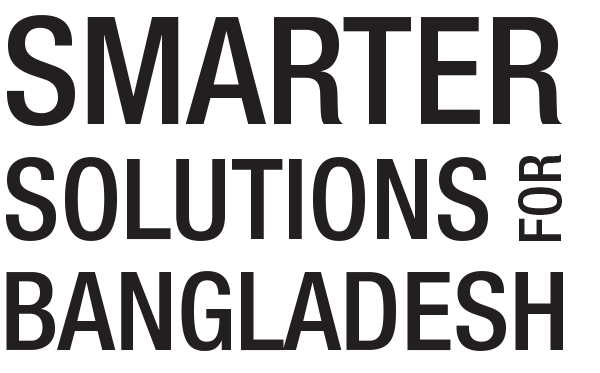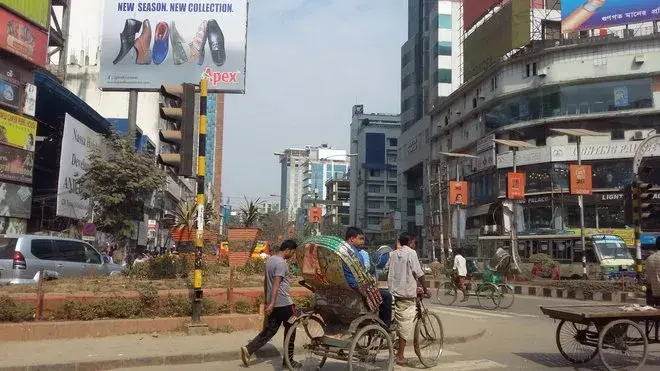The smartest ways to deal with traffic congestion in Dhaka
by Bjorn Lomborg
Dhaka is one of the fastest-growing megacities in the world. A population of just 3 million in 1971 has ballooned to 18 million today. This unprecedented urban growth has resulted in a city more densely inhabited than Tokyo, Shanghai, Mumbai, or any other major city.
The capital’s growth partially represents the progress of the Bangladesh economy, which has grown at over 6 percent annually. The city’s transport system, however, hasn’t kept up, and Dhaka now has some of the worst traffic congestion in the world.
What are the best ways to deal with traffic in Dhaka? Bangladesh Priorities, a partnership between the Copenhagen Consensus Center and BRAC, has commissioned dozens of top economists from the country, region, and world to study the most promising solutions for issues that range from traffic congestion to education to climate adaptation. The goal is to help discover how Bangladesh can do the most good for every taka spent on her development efforts.
| Strategy | Takas of benefits per taka spent |
|---|---|
| Transport infrastructure for Dhaka | 3 |
| Bus Priority for Dhaka | 6 |
Research by Robert Gallagher, a transport planner and South Asia specialist, explores alternative options for Dhaka’s future urban transport.
Two major factors contribute to Dhaka’s current traffic congestion: lack of planning and preparation over previous decades, and an over-reliance on cars due to a deficient public bus system. Even though there are 33 times more cars than buses in the city, cars account for just 13 percent of passenger transport, while buses are responsible for 49 percent.
Today, the average traffic speed in Dhaka is 6.4 kph. But if vehicle growth continues at its current pace, without substantial public transport investment the average speed may fall to 4.7 kph by 2035—about as slow as walking.
In 2014/15 the government commissioned a Revised Strategic Transport Plan (RSTP), which proposed building five metro rail lines, two rapid bus routes, and 1,200 kilometers of new roadways—double the existing major road network—including six elevated expressways and three ring roads. The total public outlay proposed in the Plan would be about Tk 3.5 trillion (Tk 351,000 crore) over 20 years.
The Bangladesh Priorities research found that private investment in Dhaka’s transport over the next two decades would be much greater than the proposed public outlay. Including all the private operating costs such as fuel, drivers’ wages, garaging, plus the actual purchase cost of new cars, motorcycles, rickshaws, the private spend could be around Tk 6.1 trillion (Tk 608,400 crore), or twice the public spend.
The public spending proposed in the Revised Strategic Transport Plan will help make Dhaka traffic flow better, both with more street capacity and more metro rail. Modeling shows that it could speed up Dhaka traffic to about 13.7 kph—the speed seen last around 2010. The biggest part of the benefits would come from travel time saved. Overall, the analysis shows that compared with a “Do Nothing” scenario, each taka spent under the RSTP scenario would do about 3 takas of good.
Transportation outcomes, however, largely depend on the mix of vehicles that occupy the new roads. The 360,000 extra cars expected in the draft transport plan will take up a very large amount of space–the area needed just to park them would take up 3.6km², about the size of the Gulshan and Banani residential areas combined. It is no surprise that Dhaka’s roads have become overloaded.
Gallagher examines an alternative scenario that focuses on greater investment in bus systems and infrastructure, which would mitigate the need for so many space-intensive private automobiles, motorcycles, auto-rickshaws and cycle-rickshaws. The scenario assumes the same amount of public spending as under the draft transport plan, but with 9,000 more buses. This would result in just 100,000 additional cars by 2035, less than a third of the number expected under the RSTP strategy. The alternative option would occupy considerably less road space, reduce traffic congestion, and lead to an average traffic speed of 14.4kph, saving commuters even more time.
The alternative scenario would also save substantial private investment on vehicles, drivers, spare parts, and fuel. Over 20 years, the more space-efficient buses could provide greater transport capacity while saving total private transport investment of about Tk 1.3 trillion (Tk 132,600 crore) compared with the RSTP scenario—a 15-percent cost reduction, equivalent to the cost of four and a half Padma Bridges.
The combined benefits from reduced traffic congestion and reduced transport system costs would mean that each taka spent would do about 6 takas of good.
Would increased investment in public transport infrastructure for the capital be your priority for Bangladesh’s development needs? We want to hear from you at copenhagen.fbapp.io/dhakatransportpriorities. Let’s continue the conversation about the smartest ways to do the most good for Bangladesh with each taka spent.
Dr. Bjorn Lomborg is president of the Copenhagen Consensus Center, ranking the smartest solutions to the world’s biggest problems by cost-benefit. He was ranked one of the world’s 100 most influential people by Time Magazine.
This article was originally posted in The Daily Star.


